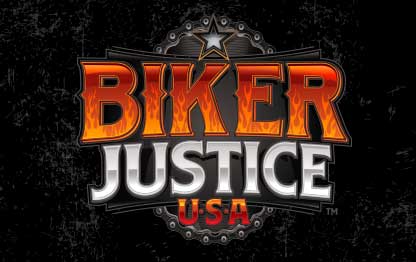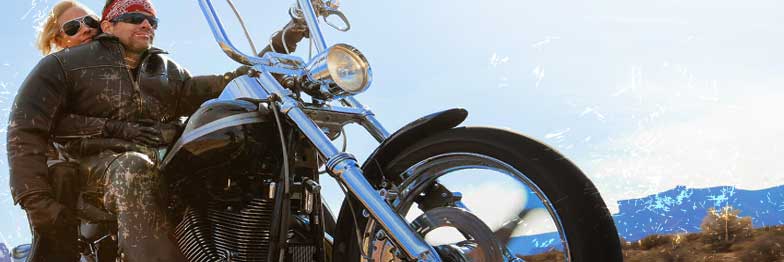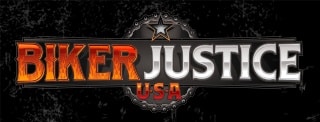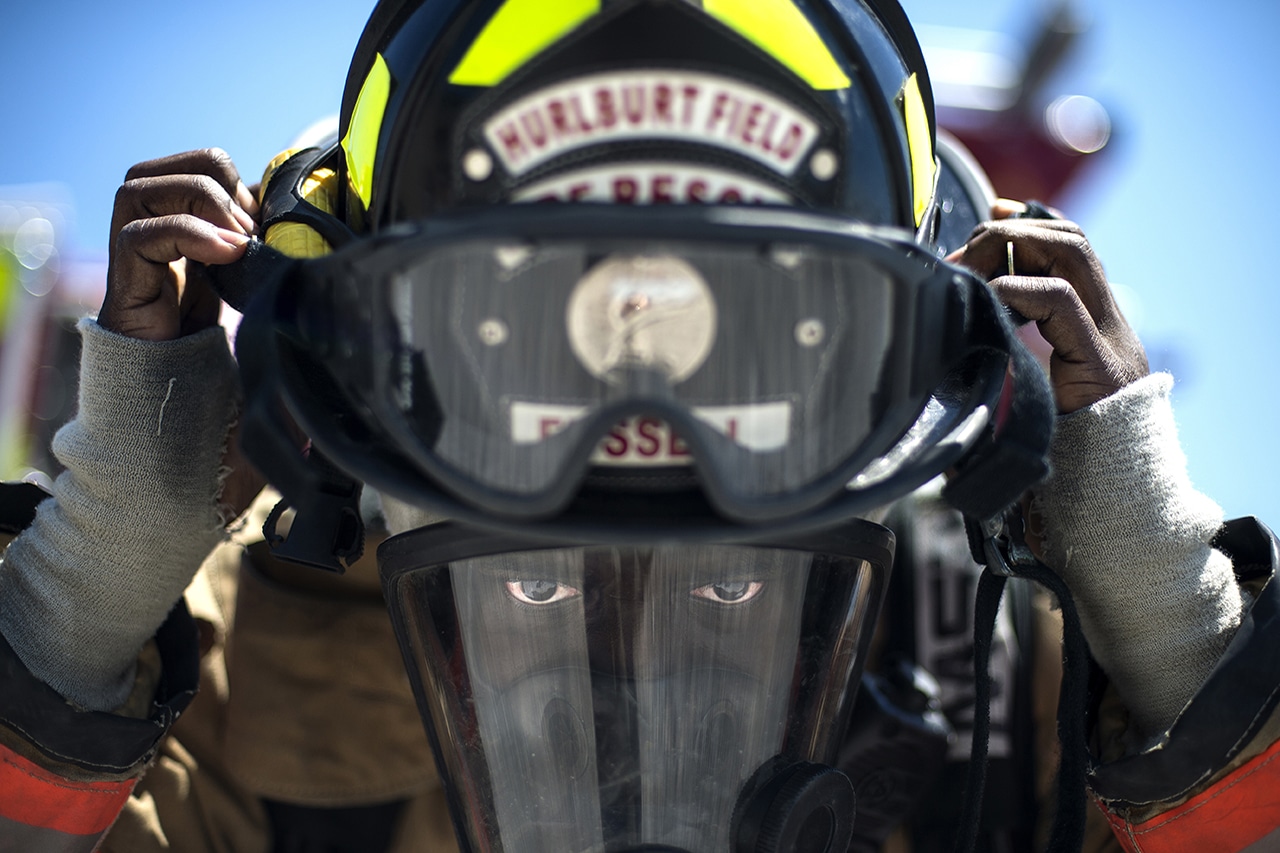
While hitting the road on a motorcycle is certainly a thrilling past-time, there is no denying that it is also dangerous. Traffic accidents are one of the leading causes of death internationally, killing 1.35 million people every year. That’s why it’s so important you have the right motorcycle safety equipment to protect yourself against known and unknown dangers.
Motorcyclists are among the most vulnerable on the roads as they are less visible to drivers and they lack the metal protection of a car. That is why motorcycle accidents happen 28 times more often than car accidents in the United States, even though they make up less than five percent of vehicles on the road.
For this reason, motorcyclists need to take all reasonable steps possible to protect themselves on the road. In addition to driving safely and defensively, this means using the right safety equipment.
We’ll share with you the most important safety gear you need to ride a motorcycle and how it protects against the most common motorcycling accident injuries. We’ll also talk about why protective gear is so important, above and beyond protecting yourself from serious injury.
While you will find a huge range of different safety gear available from any motorcycling enthusiast shop, when it comes to prioritizing, there are five pieces of safety gear that it is most important for motorcyclists to use.
It is also a good idea to invest in high-quality equipment in these areas, and not put your life at risk by trying to save a few dollars.
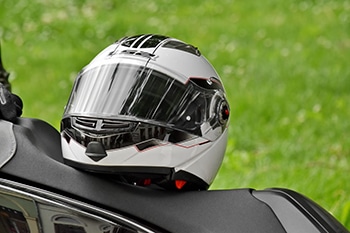
Without the protection of the metal frame of a car, your body is obviously at risk. Your head is both one of the most important and one of the most vulnerable parts of the body. A good-quality safety helmet can help protect the head against injury, in particular cuts and contusions.
A good motorcycle helmet should be robust enough to withstand the kind of impact that is likely to happen during an accident, and also fit correctly so it is optimized to do its job properly.
Start by choosing a DOT (Department of Transport) approved helmet, which will have a sticker that reads DOT FMVSS no 218 Certified. Helmets that have not been damaged in any other way should be changed at least every five years.
Helmets that have been damaged should be replaced. Even minor damage can undermine the overall structural integrity of the helmet.
As well as making sure a helmet fits correctly, it is vital to make sure it is the right shape for your head, as everyone’s head is different. Helmets generally come in round oval (for roundheads), intermediate oval (for heads with a slight oval shape towards the forehead), and long oval (for heads where this is more pronounced).
Measure around your forehead with a cloth tape just above the ears to get your size measurement. The right size helmet will be tight but not uncomfortable, and shouldn’t move when you shake your head.
A full-face helmet is always the best choice as it offers additional protection for the face and eyes. It also means less air and debris swirling around the face, which can be distracting enough to cause an accident in some circumstances.
Protection of the ears is also a consideration, either as part of the helmet or as a separate piece of equipment.
The delicate hair cells in the ear are very sensitive to the sound pressure caused by loud engines and wind blasts and can become permanently damaged when continuously exposed to these noises.
A “quiet helmet” with integrated ear protection is a great choice, or disposable foam earplugs also work as a viable alternative.
But it is important to know a safety helmet cannot protect against all head injuries.
Accidents that cause head impacts or head shaking can cause the brain to hit against the inside of the skull. This can cause internal traumatic brain injuries that can be just as dangerous as obvious cuts and bruises.
Symptoms can also be subtle and difficult to identify as they include general fogginess and mood swings. It can be particularly difficult for the injured party to self-identify these injuries because of the associated fogginess.
This is why you should always see a doctor in the aftermath of a motorcycle accident, even if you do not believe that you have suffered a serious injury.

During a motorcycle accident, it is not uncommon for a rider to be thrown from the bike. The rider can then hit the ground hard, which can cause cuts, bruises, and broken bones, or they can skid across the ground.
If the skin is not appropriately protected, this can result in road rash. While the name might sound mild, it is a serious injury. Skin can be ripped from the body as it grazes against the ground. As well as being painful, it can cause permanent damage to the nerve cells near the surface of the skins.
Protecting the skin from this type of injury is the main reason why motorcycle riders wear leather. A good set of motorcycle leathers provide a bit of armor and cushioning for impact injuries, but more importantly, it provides a good layer of covering to protect the skin against road rash.
It is best to invest in motorcycle leathers that cover you from head to toe, so a jacket and pants.
The safest motorcycle leathers will be made from thick, durable leather (or other approved material) that is specifically designed to withstand intense abrasion, and they will have double seams so they don’t come apart under pressure.
When it comes to jackets, the best motorcycle jackets will have body armor sewn in to protect the chest and back in the case of impact or flying debris. So, a jacket that you pick up at a regular fashion retailer won’t really cut it.
Jackets should fully cover your upper body, extending well up the neck to cover where the neck meets the helmet, and all the way down the arms to cover the wrists.
While the jacket should be long enough that no part of your back is exposed while leaning forward over the bike, most motorcycle jackets will only extend to just below the waist. This is because longer jackets have a tendency to flap in the wind.
Longer jackets are also more likely to get caught up in something, whether that be some of the machinery of your bike or something else that you pass close to.
For similar reasons, jackets are generally quite tight-fitting to prevent air entering and the leather from flapping in the wind.
While on television you will often see riders just using a leather jacket, and wearing jeans or even shorts, this is very unsafe. Your legs are close to the ground when riding, so are likely to be hit by debris from the road on a normal ride. While normal jeans will provide a level of protection against this, if you get thrown along the road during an accident, you may as well be wearing nothing at all.
Leather motorcycle pants should also fit relatively snuggly, but not so snuggly that you can’t sit comfortably. They will very often have extra padding included in the saddle area to make sitting more comfortable and around the knees as these can be very vulnerable during an accident as they skim close to the ground.
Leather pants should sit relatively high on the waist to ensure there is no gap between the jacket and pants, and they should also extend well down the ankle so there is no exposure between the pants and boots.
While you can wear pretty much whatever you want under motorcycle leathers, it is a good idea to think about temperature. If you are taking to the road somewhere cold, comfortable wool or thermal gear is a good choice. If you are somewhere hot, think about investing in some moisture wicking gear that will help you keep cool.
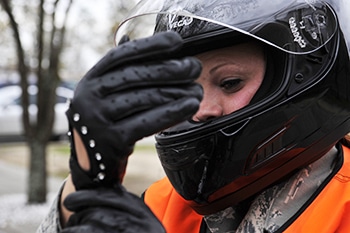
Gloves are an essential piece of equipment as the hands can bear a lot of damage while on a motorcycle. Just out on the road on a normal day, wind and debris striking against the knuckles, which are right at the front of the bike, can suffer a lot of wear and tear.
Moreover, when accidents happen, motorcyclists are often thrown from their vehicles. It is human instinct that when this happens, we put our hands and arms out to protect ourselves. This means when we hit the ground, we often hit with the palms of our hands first.
So, a good pair of safety gloves are made from a sturdy material that protects the hands against the cold of the wind and potential cuts from debris, and also adds a little bit of cushioning to minimize the damage to your hands and wrists when you hit the road hands first.
Your legs are another part of the body often hit hardest in a motorcycle accident. The legs are near the ground and can easily scrape against the hard surface of the road during an accident, cutting up lower legs and feet.
It is also possible for legs to get caught and crushed under the motorcycle if it lands on top of you.
A good pair of boots can offer a degree of protection from both scraping and crushing injuries to the feet and ankles during the course of an accident. This is why you should never wear sneakers on a motorcycle, as they offer no protection in the event of an accident. Specialist boots are required, as even a good pair of work boots won’t provide sufficient protection in the event of a crash.
Good motorcycle boots can be quite uncomfortable, as they shouldn’t really allow your feet to bend or your ankles to rotate. They should have added protection in these areas, which may include metal plates in the soles of the shoes and very thick leather for the uppers.
They should also be oil-resistant, so you don’t slip on the road, and fit snugly.
If something goes wrong with your motorcycle, in a lot of circumstances you will probably need to call a friend or a professional to give you and your bike a lift home.
But if something minor goes wrong with your ride, you might be tempted to risk making your own way home. But even a small problem with your machine can be an accident waiting to happen.
For this reason, you should never hit the road without some essential tools, and some know-how in terms of dealing with the most common and troublesome problems. This is also why you should give your vehicle a thorough check before heading out on the road.
The most common problems to look out for include:
If you keep an eye on these key issues while on the road, you are less likely to find yourself in any type of unfortunate situation as a result of motor malfunctions.
In addition to keeping you safe and helping prevent some of the most common injuries associated with motorcycling accidents, having the right gear may also help you when it comes to an insurance claim in the event of an accident.
In most states, when you are in a traffic accident, the individual “at fault” needs to pay for all damages through their insurance.
Despite the common belief that motorcyclists cause accidents as they weave between cars in heavy traffic, more often than not it is the drivers of cars who cause these accidents.
This is because, while motorcyclists are trained to keep a close eye on the other vehicles around them, drivers of cars are trained to keep their eyes on the road and other cars.
They can often miss motorcycles that are behind them or in their blind spot, and then stop or swerve suddenly in a way that results in an accident.
But both individual drivers and insurance companies don’t always want to pay out for an accident. For drivers, it can increase their premiums, and for insurers, it can affect their bottom line.
For that reason, it can be in their interest to try and show that the driver of the motorcycle is also partially at fault for the accident, therefore, limiting their own liability. One of the easiest ways to do this is by demonstrating that the motorcyclist had not taken appropriate safety precautions, and not having the right gear could certainly qualify.
But if, in the aftermath of an accident, you can show you had all of your safety considerations in place, your claim will be much stronger.
If when dealing with an insurance company, either your own or that of another driver, you feel that they are trying to limit their liability, it is generally time to contact a lawyer.
Key signs the insurance company is looking for a way to avoid paying out reasonable compensation include:
A lawyer experienced with these types of cases knows all the tricks insurance companies use and have strategies in place to deal with them. They can also help you assess the strength of your case and ensure that you get the maximum compensation that you deserve for the accident.
Motorcycles are powerful machines, which is what makes riding them so much fun. But, with great power comes great responsibility.
In this case, you have the responsibility to protect yourself on the road. One of the best ways to do this is to invest in the right safety equipment to protect the integrity of your body in the case of an accident. This includes a safety helmet, good-quality protective leathers, protective gloves, protective boots, and appropriate tools.
While these items can be expensive, and may sometimes seem like a burden to carry around, if you are unlucky enough to find yourself in an accident, you may be very grateful for them.
An experienced Alabama Motorcycle Accident Attorney
Main Office
PO Box 678 – 1638 Miller Hill Road Lenoir, NC 28645
Phone: (813) 492-7747 | Send us an email

This site uses cookies: Find out more
